
Discovery of the M31 [OIII] emission arc
Recently, a major discovery by an international team of amateur astronomers and scientists has become a huge online hit, and this new discovery is just located in one of the
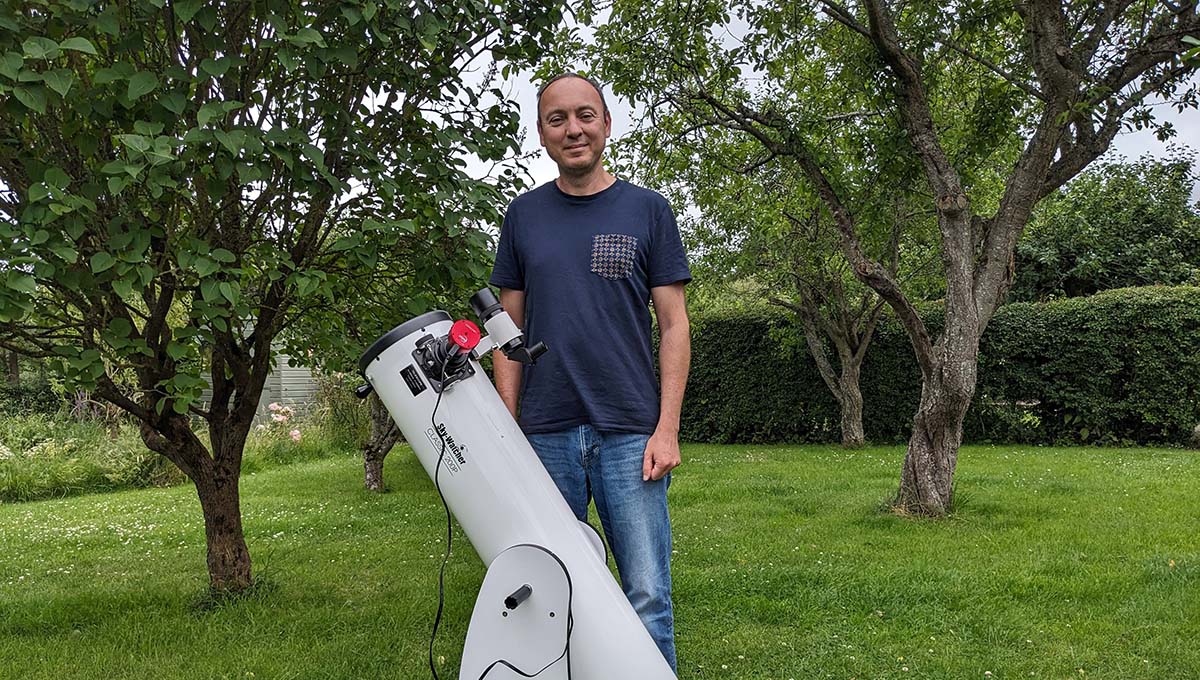
Hello Konstantinos, thanks for accepting our interview invitation. Congratulations on winning the ASIWEEK competition in week #30/2023!
Thank you very much. My name is Konstantinos (Kostas) Beis and I live in rural Wiltshire, UK. I am originally from Athens, Greece, but I have been in UK for the past 26 years. By day, I am a Reader at University researching the structure of biomolecules, but at night I am an amateur astronomer with an interest in planetary imaging. My wife and two kids, 6 and 8, are sometimes my companions observing the moon and planets.

I am relatively new to the hobby as I picked it during the COVID lockdowns in 2020. I have always been interested in the science of space due to my background, but I never got around owing a telescope until recently. I am interested in both visual observations (mostly faint nebulas as I live in relatively dark skies) and planetary imaging. I started my journey by photographing the Milky Way and International Space Station with a basic DSLR on a tripod. My more serious astrophotography with a telescope started by trying to improve on my ISS captures with the DSLR attached to my telescope, and later with a planetary camera. The planetary imaging came much later after I observed Saturn and Jupiter for the first time where I was fascinated and mesmerized by their appearance at the eyepiece. I have been doing more dedicated planetary imaging since 2022. I started with the usual ones, Saturn, Jupiter and Mars. Venus is a 2023 project that got me hooked to this planet.
My image is of Venus, the “evening star”. The image shows the Venusian clouds in ultraviolet light, they contain sulphuric acid that absorb at this wavelength. The image is in false colour by combining videos with either a UV or IR pass filters. In postprocessing I colourise the two captures to bring the colours out, they are not true colours but a personal interpretation.

My postprocessing consists of PIPP to extract, stabilise and quality sort the frames to a new video. The best frames are further quality sorted and stacked in AutoStakkert! (AS!3). Finally, I bring the details out with wavelets in RegiStax. I do this procedure for both the UV and IR pass filter videos. I align them in GIMP and colourise them; IR is assigned red as it is in the Infrared region, UV is blue, and I make synthetic green by combining the UV and IR images. I colour balance them and adjust the final colour, saturation and brightness.
My setup is a Sky-Watcher 200P Dobsonian (8”) equipped with an ASI462MC and an ASI462MM. The setup is fully manual which is quite simple to use, but a bit fiddly sometimes, which I do not mind. Tracking can be a bit of a challenge, but I have got my technique working quite well as I regularly track the International Space Station.

The main advantage for me is the simplicity of the setup that I can bring in and an out in less than 5 minutes (excluding any cooling time in between) and quickly swap from imaging to visual.
The main difficulty is the patience it requires to get the target focused, especially with the unstable UK weather, and to capture images in a tight ROI; I use a 640×480 capture window to maximise my fps. Regarding focusing, I do not have much advise apart trying to get it as close as possible. Regarding tracking, I use a Right Angle Correct Image finder that is aligned with the camera chip to get the planet spot on every time. I use the drift method where I let the planet drift across the FOV, move the telescope and repeat. It only takes 10s to go out of view so with captures of 5-10minutes, it can get rather repetitive.

Planetary imaging has a great appeal to me as the details of planets change, either cloud formations or new surface features or moons appear as they rotate, they are very dynamic. Jupiter is my favourite planet as you can capture the rotation in almost real time and transits of its moons that can cast shadows on its surface. It is the same with Mars, where you can capture storms and clouds as its seasons are changing. Venus is another favourite target with both the UV clouds changing on a daily basis.

I assume you refer to my caption that my Venus image was captured during daytime. The main advantage I found is that the atmosphere is a lot more stable, where later at night you have cooling effects that will impact the quality of the capture. Additionally, late captures mean that you are shooting through thicker part of the atmosphere rather than when the target is higher up. In my experience and setup, it has a big impact on getting good UV clouds. The IR imaging is less prone to these parameters. The danger of capturing Venus at daylight is that you need to be extremely careful with the Sun. I am lucky that I have a neighbour’s roof blocking it at the right time of my capture. Capturing the other planets at daylight has the disadvantage of washed out colours, so I do the rest of my planetary imaging at night or early morning before sunrise.
The best advice I was given and I pass it on is to experiment with different setting during the capture, and most importantly learn your equipment and its limitations. During a session I will try several captures with slightly different settings, not just a single one. I have learned what works for each target in terms of exposure and gain. If the seeing is not great, I aim for high fps captures and I always try to keep my histogram between 60-80% as in postprocessing it will not affect the image. The postprocessing has also to be tweaked for each capture as conditions during imaging will be dfferent.
It is probably repetitive to your readers, but collimation is important to capture the finer details. Do not be afraid to mess around and learn your telescope. It is not as daunting as it seems. I use a Cheshire followed by a star test.

Capturing the International Space Station with the help of my son during COVID. We were both self-isolating and we worked together, him on the computer, and myself tracking. I have captured ISS on my own several times but that was the most fun and memorable one.


I have two highlights in astrophotography; having my Venus image selected at #asiweek as there are so many excellent images submitted there. I never thought I would be on that level. I feel hambled by the recognition as I have only been doing it for the past year or so. And my second is having my Jupiter image with a double moon transit and their shadows published in an astrophotography magazine in 2022.
My family are very supportive of my hobby although I do have to wake up crazy hours sometimes. I have been told that “as long as I do not wake them up, it is fine”. I do my processing at night, and my workflow does not take too long these days. My family joins me on observing the moon and planets, although they do not have my bug of astronomy. I love being out under the stars, I find it very calming after a busy day at work.

I started in 2021 with an ASI120MC-S which got me hooked on imaging the ISS and some attempts on planets. I then moved to ASI462MC for its excellent performance on colour captures, IR sensitivity and high fps, and I recently added the ASI462MM mostly for its sensitivity at the UV region.
No suggestions, just keep on the excellent work with the hardware and software. I use ASICap for my captures and it is an excellent software.
We are entering the Saturn and Jupiter season, so I am very excited to start again with these targets. I already had my first Saturn capture for this season at summer solstice.


Recently, a major discovery by an international team of amateur astronomers and scientists has become a huge online hit, and this new discovery is just located in one of the
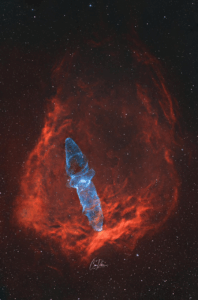
To most people, this might just look like a pretty picture. But to astrophotographer Cem Diken, it’s the result of three years of chasing a nearly invisible ghost in the

I was born in Guadalajara, I’m 38 years old, a musician, communications and electronics engineer, and president of the Guadalajara Astronomical Society A.C. since 2020. First Contact with Astronomy Since
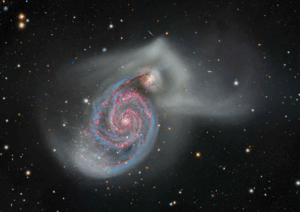
This stunning collaborative project comes from astrophotographers Alex Linde and Thomas Hansson, who joined forces across borders to photograph the Whirlpool Galaxy from Sweden, Poland, and Texas, USA. Thomas traveled across
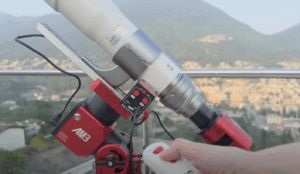
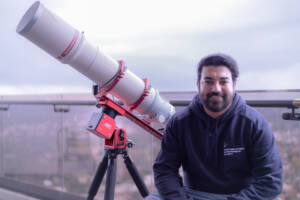
“Two thoughts immediately crossed my mind—the vastness of the cosmos, and that I could also create images like the ones that inspired me.” ” If you spend more time debugging than